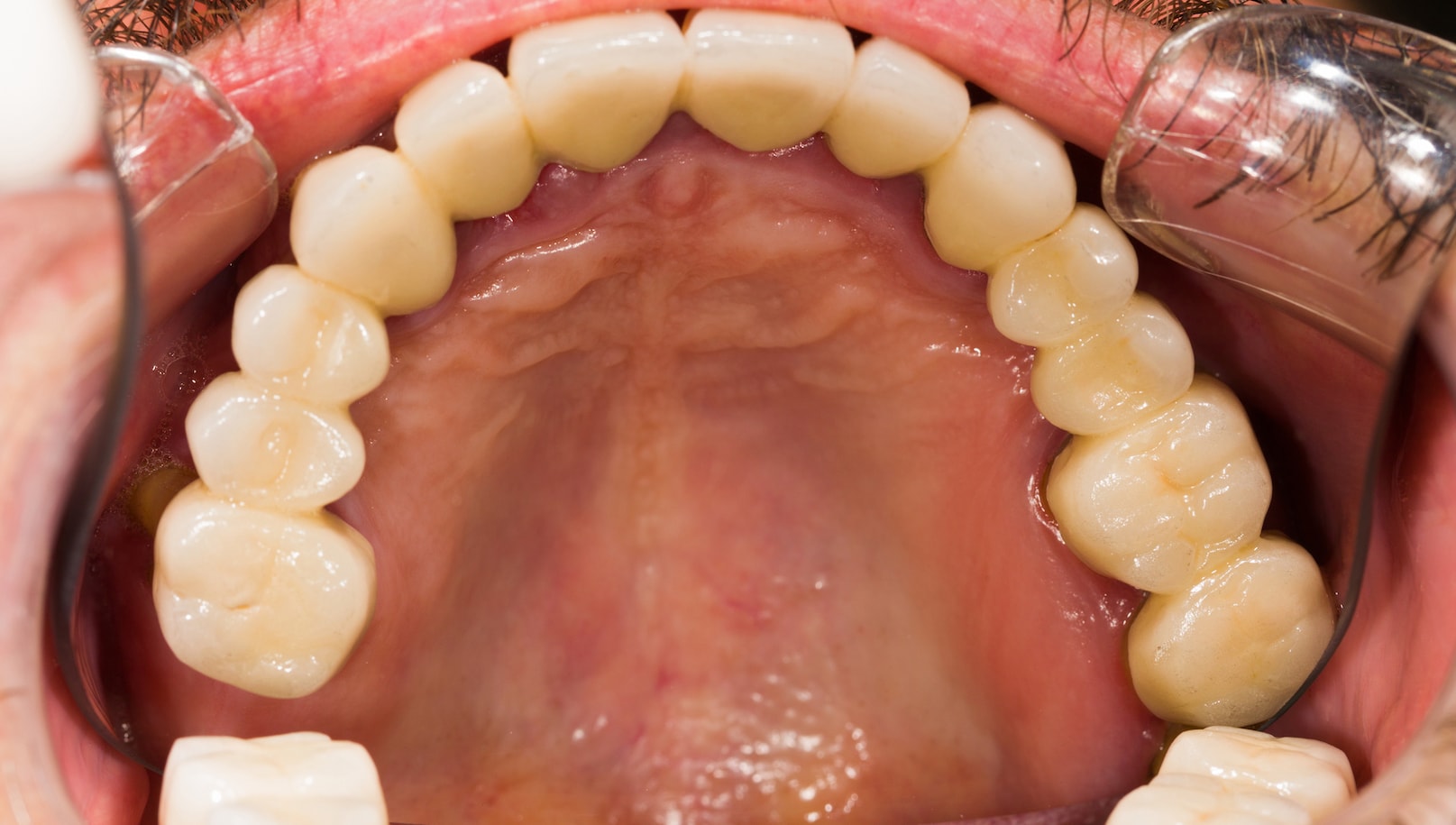
Dental onlays and crowns are used to restore an extensively damaged tooth. In these types of restorations, some tooth structure is removed and one or more outer surfaces of the tooth are replaced by the dental material from which the onlay or crown is made of. An onlay provides partial coverage to the damaged tooth while a crown provides complete coverage.
A good candidate for an onlay and a crown will need restoration for a badly-broken down tooth. A tooth that requires an onlay or crown may have parts of it fractured off, may have a large filling with recurrent decay underneath, or may simply have a large decay or cavity. In a case where the tooth damage is extremely extensive, for example, when half or more of the tooth is already destroyed, a simple filling will not be enough to mend it anymore and so needs an onlay or crown. An onlay is less invasive than a crown so it is often considered first, especially in young patients, in order to save as much tooth structure as possible.
The main advantage of an onlay is that it is more conservative than a crown. It is not as strong and durable nor does it reinforce the remaining tooth structure as well as a crown does. The main advantage of a crown, on the other hand, is that it holds the remaining tooth structure together through its complete coverage. Disadvantages of crowns include necessary tooth reduction and multiple appointments. An onlay may be done in the dentist’s clinic or in a laboratory while a crown is always fabricated in a laboratory.
Compared to both onlay and crown, dental bonding, also known as composite restorations offers a much more conservative approach to restoring damaged teeth. With dental bonding, the dentist can remove all of the decayed parts and leave the sound tooth structure alone. Once all the decay is removed, the dentist can bond the restorative material to the part where the tooth reduction was done. The only problem with a composite restoration is that it is recommended only in cases of mild to moderate damage.
Dental onlays and crowns have no limitations when it comes to restoring a badly-damaged tooth. In fact, a dental crown is the last resort when it comes to restoring teeth. The only major concerns with onlays and crowns are the amount of tooth reduction required and the fact that the dentist will have to remove both decayed and sound tooth structure. Other than that, if the dentist modifies the tooth properly and the laboratory fabricates the restorations correctly, there will be no limitations.
If done properly, onlays and crowns last for a long time without causing any long or short term complications to the patient. In the case of crowns, if the damage is so extensive that it has reached the gum area already, some swelling of the gums could occur as a result of the dentist removing tooth structure near that area. But this swelling is only temporary and can heal on its own as long as the patient practices good oral hygiene. For onlays, there is a lower risk of swelling because the dentist will remove tooth structure that is far away from the gum area.
No recovery period is required after getting onlays or crowns. Patients can expect to have healthy teeth that can chew almost anything and it should feel normal for many years.
Patients are advised to stay away from foods that can cause stains especially if they are still wearing their temporary restoration. Some of these foods and beverages include coffee, berries, red sauce, and red wine. Once the final restoration is in, patients are also instructed to clean their teeth thoroughly and visit the dentist regularly. The use of regular gel toothpastes is recommended instead of whitening toothpastes that contain high amounts of abrasives. The abrasives will make the shiny surface of restorations go dry and dull. Regular non-whitening toothpastes are the smoothest ones available and they will not affect the surface of the restoration.
Dental onlays and crowns can last for a minimum of 3 to 4 years. They can last even longer if properly taken care of. In older patients, one factor that may shorten the lifespan of the restoration is gum recession or the pulling away of the gum tissue down from the tooth crown.
With the quality of dental materials available today, the longevity of restorations is a matter of correct diagnosis, meticulous treatment planning, and careful execution of the treatment plan. When it comes to dental onlays and crowns, each restoration has advantages over the other. If done properly, they can be a long lasting, valuable treatment option for the patient.
Written by Cosmetic Town Editorial Team- AA
Based on an exclusive interview with Anthony Vocaturo, DDS in Bayonne, NJ